Are you considering a skin rejuvenation and trying to compare microneedling vs dermarolling? You’re in luck!
As a world-renowned skincare expert, I’ve not only researched both techniques extensively but also conducted my own trials, ultimately choosing microneedling for my skin after consulting with my top-notch team of researchers.
In this exclusive article, I’ll delve into the intricacies of microneedling and dermarolling, providing you with an expert comparison, and empowering you to make the best choice for your unique skin needs.
Get ready for the ultimate guide to the age-old question and learn everything you need to know to get the best for your skin!
Table of Contents
Key Takeaways
- Microneedling is generally more effective and controlled but comes at a higher cost.
- Dermarolling is an affordable DIY option, but results may vary, and user error is possible.
- Consult with a dermatologist before undergoing any skincare treatment.
Microneedling vs Dermarolling: Which To Choose?
Puzzled by the 2 options? Don’t be – Let’s start with the Derma Roller.
Derma Roller
So, the first thing you need to know is that a Derma Roller IS a microneedling device…it’s just a toned-down version of the type you’d see in a dermatologist’s office.
Satish Doddaballapur, a researcher in the field of microneedling, highlights the advantages of this treatment, stating that ‘Microneedling with dermaroller is a new treatment modality for the treatment of scars, especially acne scars, stretch marks, wrinkles, and for facial rejuvenation. [1]”
The Derma Roller is an easily available device that can be used for DIY microneedling at home.
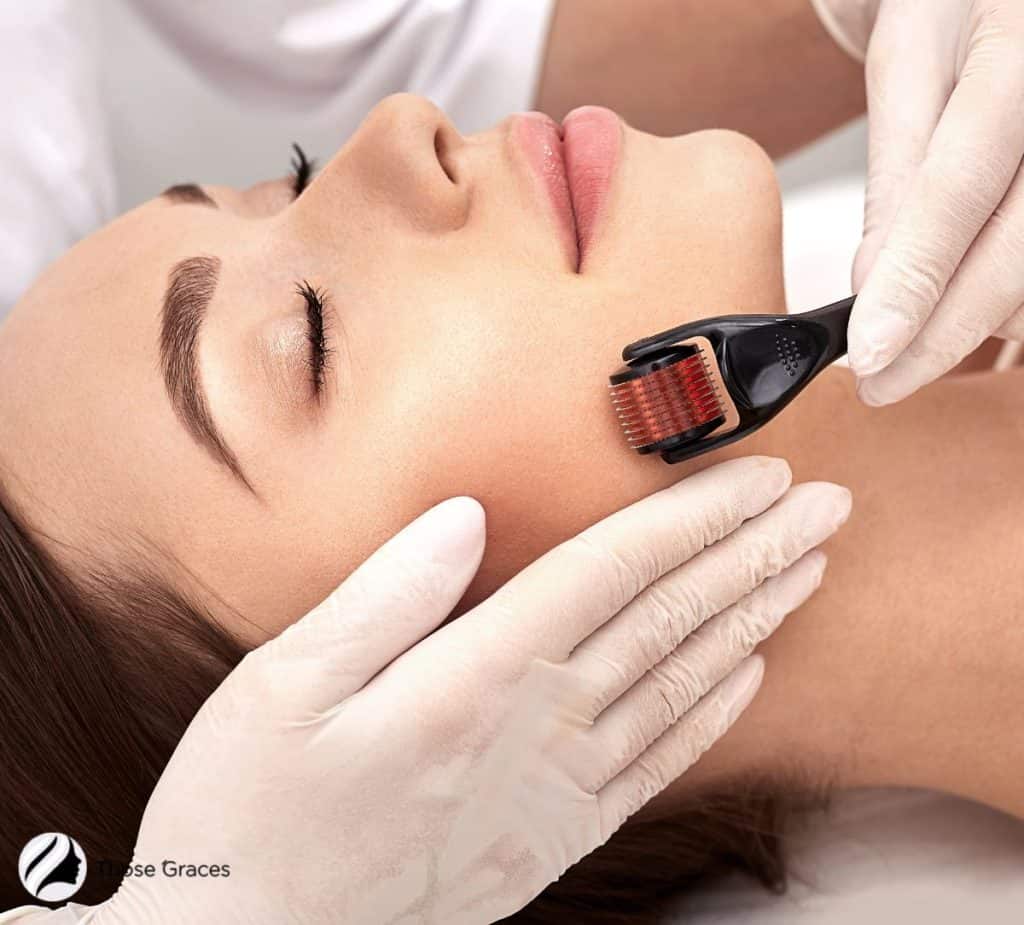
It has numerous needles situated on a rolling head. Don’t let that intimidate you, though!
For mild microneedling treatments, you can choose to use Derma Rollers. These skin improvement tools treat wrinkles, fine lines, and stretch marks.
Check our best derma roller review!
How Does It Work?
As you roll the Derma Roller across your skin, fine needles on the roller puncture that skin. When the tool punctures your not-so-healthy skin, it induces controlled micro-injuries.
As microneedling expert and researcher S. Doddaballapur points out: “It is a simple and relatively cheap modality that also can be used for transdermal drug delivery. [1]”
That leads to the creation of new fresh cells as your skin heals. Don’t worry. It does not cause actual damage to the outer layers of the skin.
The focus of this effective treatment is generally around your neck, belly area, and facial regions.
If you want to know how to use derma roller at home, watch this video:
Microneedling
Microneedling, on the other hand, is a professionally done procedure that, more often than not, uses a Derma Pen. (Not always, but generally, the Derma pen remains among the top choices for professionals).
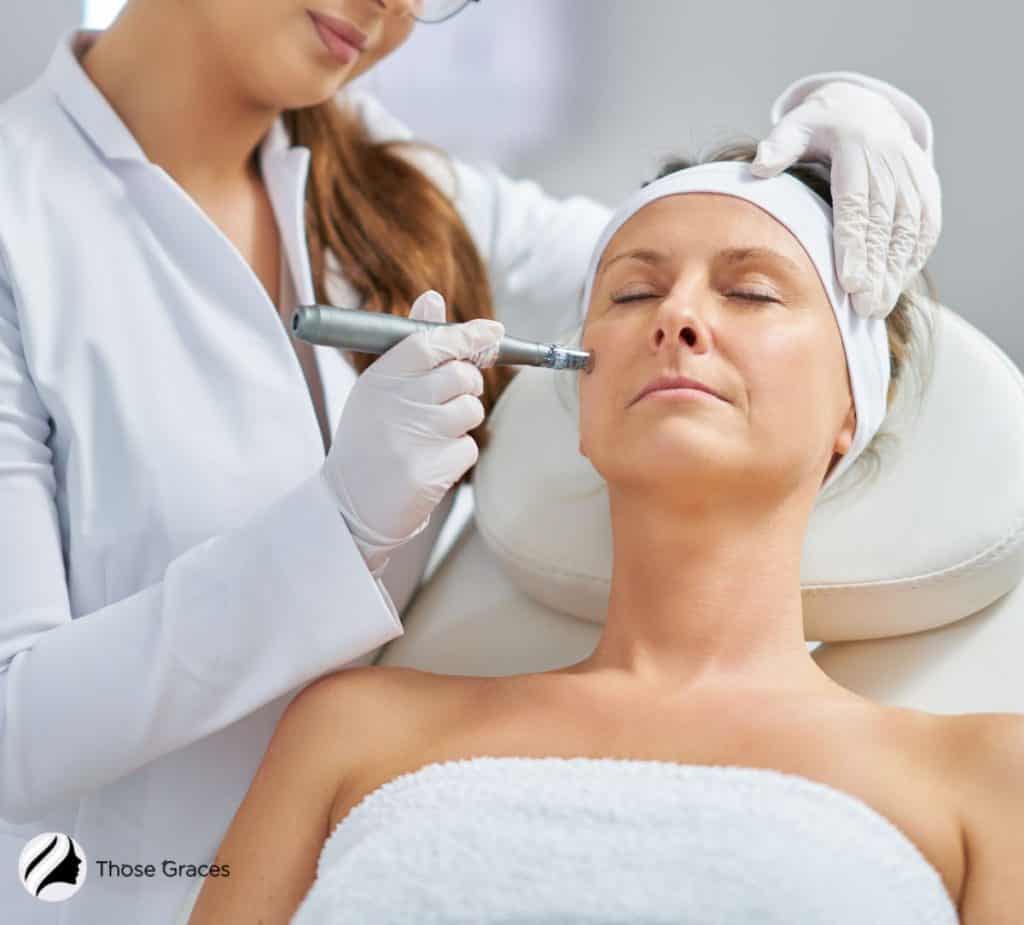
Also known as skin needling, microneedling is a minimally invasive cosmetic procedure that involves the use of a device with fine needles to create tiny punctures on the skin’s surface.
What it does is stimulates the production of collagen and elastin, leading to a more youthful, smoother, and rejuvenated appearance [3].
How long does the procedure take?
Generally speaking, an in-office microneedling treatment will take about an hour.
How Does It Work?
Microneedling is typically performed by a trained dermatologist or aesthetician in a professional setting, ensuring the highest level of safety and precision.
As described by researchers Iriarte et al., from Clinical, Cosmetic and Investigational Dermatology, “Microneedling (MN), also known as collagen induction therapy, is a process involving repetitive puncturing of the skin with sterilized microneedles [3].“
More specifically, and to understand the microneedling process in more detail, Tsippora Shainhouse, MD, a board-certified dermatologist in Beverly Hills, California, explains this procedure “creates tiny holes or channels in the dermis,” he explains, “or top layer of the epidermis, when done superficially at home. [2]”
As you can see, the effect boosts your skin’s natural healing process by encouraging collagen production within your skin.
By triggering the skin’s repair mechanisms, microneedling significantly improves the appearance of fine lines, wrinkles, and acne scars/acne scarring.
Did you know that you can do these procedures at your home? That’s right! Scroll down to learn all about At-Home Microneedling and Dermarolling Procedures...
Be sure also to explore my post on ‘How Often Should You Use a Derma Roller?’ to maximize your skincare results!”
At-Home Microneedling and Dermarolling Procedures (9 Easy Steps)
If you’re interested in trying microneedling or dermarolling at home, follow these 9 steps to ensure a safe and effective experience:
Choose the right device:
For at-home dermarolling, select a device with needle lengths between 0.25mm and 0.5mm. Anything longer should be left to professionals. Microneedling pens can also be used, but follow the manufacturer’s guidelines.
Prepare your skin:
Clean your face thoroughly and gently exfoliate to remove dead skin cells. This will ensure that the microneedling or dermarolling process is more effective.
Sanitize your device:
Soak your dermaroller or microneedling pen in 70% isopropyl alcohol for at least 10 minutes to ensure it’s properly sterilized.
Divide your face into sections:
This will help you keep track of the areas you’ve treated and ensure an even application.
Use the proper technique:
For dermarolling, gently roll the device over your skin in vertical, horizontal, and diagonal directions, lifting it after each pass. For microneedling pens, follow the manufacturer’s instructions on the proper technique.
Apply a serum:
After microneedling or dermarolling, apply a serum with hyaluronic acid, peptides, or growth factors to enhance the healing process and improve results.
Clean and store your device:
Rinse your dermaroller or microneedling pen with warm water and let it air dry before storing it in its protective case.
Allow your skin to heal:
Give your skin time to recover after each session. For at-home dermarolling, waiting at least 4-6 weeks between sessions is recommended.
Monitor your skin’s progress:
Take note of any improvements or potential issues after each session, and adjust your treatment plan as needed.
According to Dr. Dr. Marisa Garshick, a board-certified dermatologist at Medical Dermatology & Cosmetic Surgery in New York, “Although it’s possible to see some improvements after one session, it generally takes three to six sessions, spaced four to six weeks apart to see a major difference.“
That’s right. Take your time and follow these guidelines for a successful at-home microneedling or dermarolling experience.
Key Differences Between Dermarolling and Microneedling
While these Microneedling tools may work towards essentially the same results, they are still very different from one another.
Efficacy
If you’re wondering which one has more control, it’s dermarolling.
Derma rolling requires that you pass over a wider area rather than specific points.
So, this may make it less effective than when performed by a professional dermatologist or skincare specialist. It also has more room for user error.
Check: Derma Roller Side Effects
Accessibility
Derma Pens, typically used for microneedling, are limited to medical and professional personnel.
However, Derma Rollers are more accessible, as they can be used outside medical settings, making them a popular choice for a wider audience.
Healing Time
By the specificity of the derma pen microneedling, recovery time is also much faster compared to its DIY relative to the Derma Roller.
Reach of the Tool
Unlike the Derma Roller, designed to enter your skin at an angle, the microneedling procedure via derma pens enters your skin vertically.
Being vertical and not angled, unlike the Derma Roller, the derma pen reduces the risk of skin tearing and scarring.
Worse, an improper angle will cause your skin to become irritated and infected and lead to permanent skin problems.
Cost
Getting microneedling done professionally can be expensive, with treatments costing anywhere between 200 USD to 700 USD.
In such cases, the more affordable and frankly not at all bad option of using the Derma Roller, which is less than half the cost and easily available, might be the more feasible mode of action for you.
Benefits and Drawbacks
To help you decide which treatment is right, I’ve listed the pros and cons of microneedling and dermarolling.
Let’s start with the benefits…
| Benefits of Microneedling | Drawbacks of Microneedling |
|---|---|
| Precision: Trained professionals perform microneedling with a device that has adjustable needle depths for optimal skin penetration, consistent results, and reduced risk of injury. | Cost: Microneedling treatments are more expensive than dermarolling, especially when multiple sessions are needed to achieve desired results. |
| Customizability: Microneedling can target specific skin concerns, such as scarring or wrinkles, by adjusting needle depth and treatment frequency. | Limited Accessibility: Microneedling is typically performed in professional settings, which may not be suitable for those who prefer at-home treatments. |
| Minimal Downtime: Microneedling often results in less redness and swelling than dermarolling, allowing you to return to your daily activities more quickly. |
As you can see: this procedure offers excellent precision, but here’s a caveat: it may be costly. Check out Dermarollilng to compare…
| Benefits of Dermarolling | Drawbacks of Dermarolling |
|---|---|
| Affordability: Dermarolling devices are readily available for purchase, allowing you to perform treatments at home and save money compared to professional microneedling sessions. | Inconsistent Results: Manual pressure used in dermarolling can result in uneven needle penetration and variable outcomes. |
| Convenience: The ability to perform dermarolling at home offers flexibility to accommodate your schedule. | Increased Risk of Infection: At-home dermarolling increases the risk of infection if the device isn’t properly cleaned or if the skin isn’t adequately prepped before treatment. |
Let’s see what experts have to say about microneedling vs dermarolling…
What Experts Say
Expert Taylre Sargent, a medical aesthetician at Alamo Heights Dermatology, highlighted the fascinating benefits of microneedling.
Taylre has a passion for skincare and extensive experience providing results-driven treatments for her patients.
When asked about her favorite procedure, Taylre responded, “I really love microneedling with PRP. It’s a great procedure that delivers excellent results, treats many different skin types, and addresses many skin concerns. Also, there is minimal downtime! [5]“
She also emphasizes the versatility of an aesthetician’s role, stating, “I think what surprises most people about my job is that there is so much an aesthetician can do, especially when experienced and certified in the medical field. It’s more than just facials.”
Latest Research Findings
Recent studies have shown that both microneedling and dermarolling can be effective in stimulating collagen production and improving skin concerns like scarring, fine lines, and pigmentation.

One study published in The Journal of Clinical and Aesthetic Dermatology found that microneedling treatments led to significant improvements in acne scarring [6].
This study confirms the surprising benefits of microneedling: “Microneedling therapy or percutaneous collagen induction is a new addition to the treatment modalities for such scars and has been reported to be simple and effective in atrophic acne scar treatment.“
As for dermarolling, studies – i.e., those done by Clinical, Cosmetic and Investigational Dermatology – reported that at-home dermarolling could enhance the efficacy of topical treatments: “This allows for enhancement in the absorption of mainstay topical therapies across the thick stratum corneum. [5]“
Yet, more research is needed to determine both methods’ long-term effects and optimal treatment protocols.
Case Studies
Microneedling
According to a systematic review of 33 recent peer-reviewed studies published in Dermatologic Surgery, microneedling has been shown to be an effective treatment for acne scars [7].
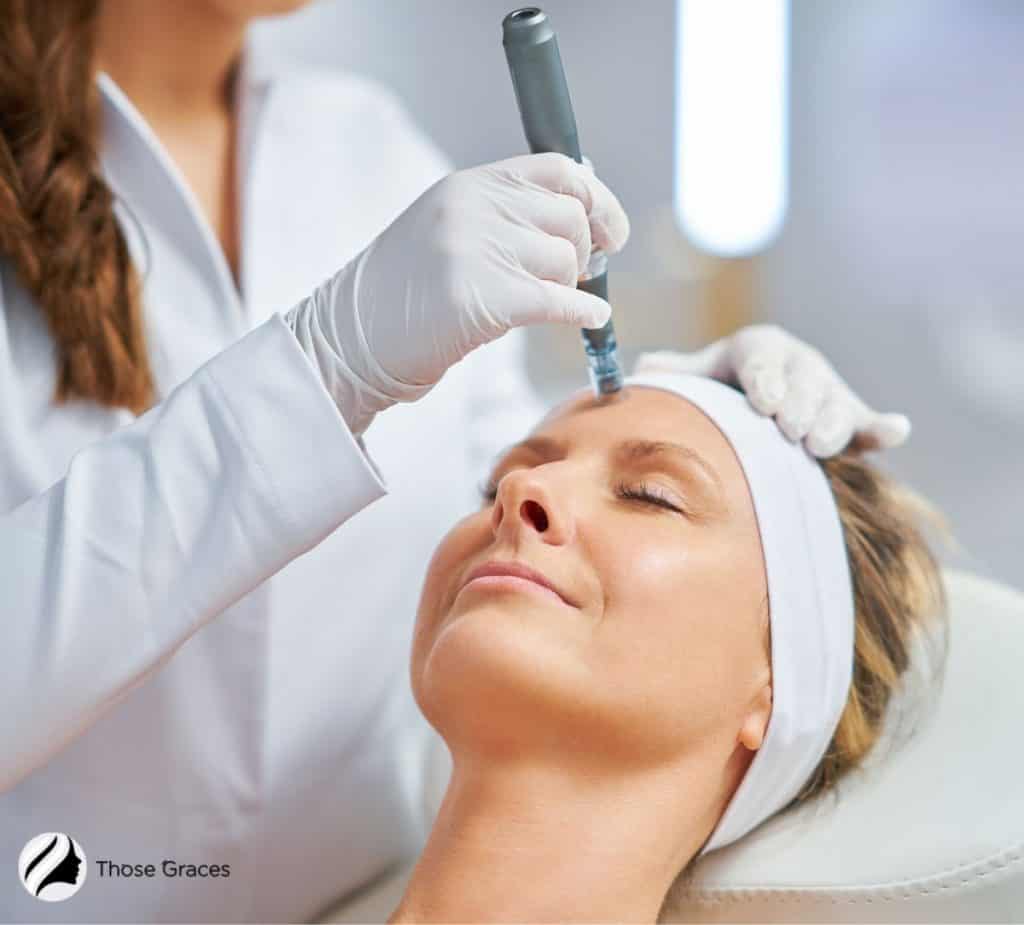
Dr. Neelam Vashi, an associate professor of dermatology and the director of the Boston University Center for Ethnic Skin, states, “I use microneedling to help ameliorate the signs of atrophic acne scars.” I use this treatment because microscopic injuries to the skin help with collagen production and a reduction in signs and symptoms. There is relatively little downtime with this procedure and it is well-tolerated by all skin types.” [7]
In one of the studies reviewed, researchers in Pakistan reported that microneedling significantly improved the appearance of acne scars in 45 patients.
After four microneedling sessions performed under local anesthesia, 73% of the patients with grade 4 scars (based on the Goodman and Baron scale) improved by two grades, while the remaining grade 4 scars improved to grade 3.
In addition, 30% of the 20 patients with grade 3 scars improved by one grade, while the others improved by two grades. All patients with grade 2 scarring improved to grade 1 [7].
Dermarolling
In a study published in the Journal of Maxillofacial and Oral Surgery, researchers conducted a prospective randomized study to evaluate the efficacy and complications of microneedling therapy in managing facial scars resulting from acne, trauma, and surgery [8].
The study included 50 patients who were treated with dermaroller microneedling and concluded that “The dermaroller is a definitive credit crunch skin rescue option. It is simple yet effective and suitable for all skin types and skin tones.”
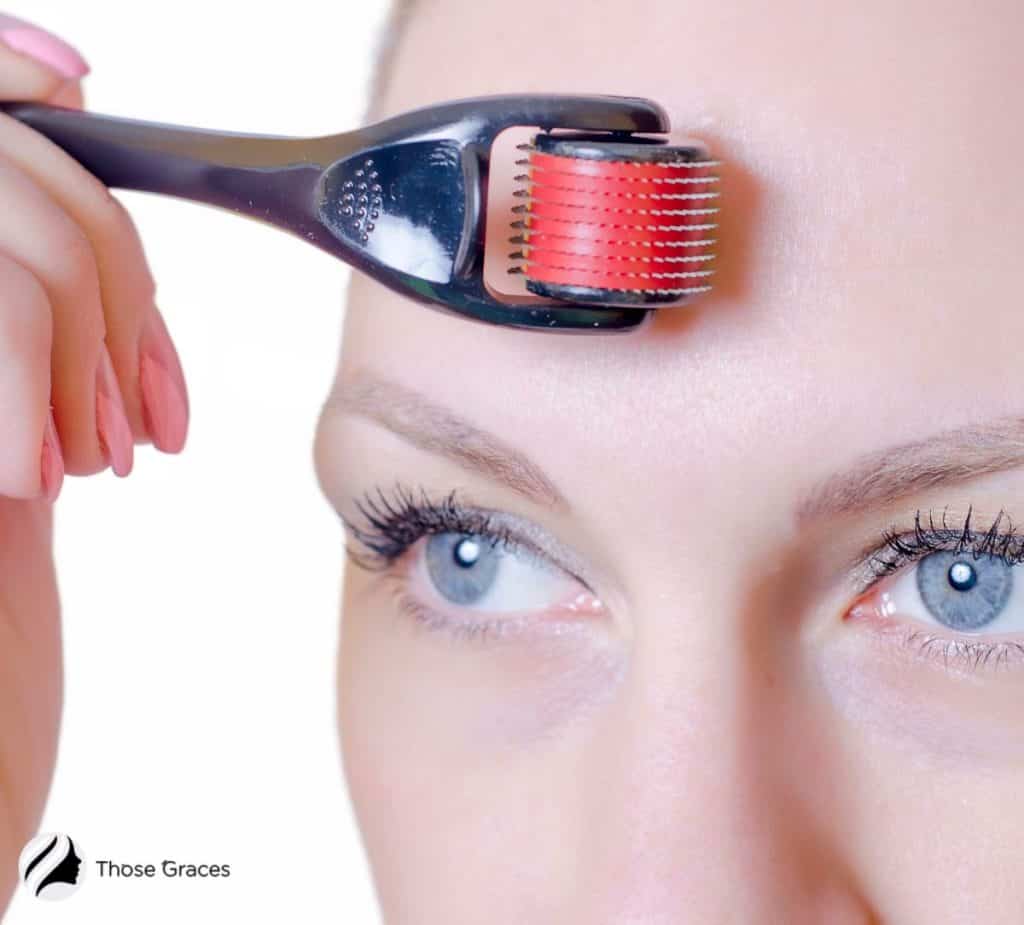
Post-treatment, three evaluators assessed the patients by comparing their preoperative and postoperative clinical photographs.
The results indicated that 14% of the patients showed an excellent response to the treatment, 52% had a good response, 28% had a fair response, and 6% had a poor response.
The findings support the effectiveness of microneedling therapy as a treatment modality for various types of facial scars, including acne, traumatic, and hypertrophic scars.
My Personal Experience
As a dedicated skincare enthusiast and expert with over 20 years of experience, I’ve enjoyed trying microneedling and dermarolling treatments to help improve my skin’s overall texture and appearance.
I must say, both treatments have yielded fantastic results for me. However, it’s essential to remember that any skincare routine has pros and cons.
For instance, microneedling did wonders for reducing my acne scars and fine lines while providing a gentle and caressing effect on my skin.
Also, it’s a cost-effective treatment that helps maintain my skin’s health even after professional treatments.
But please don’t rely solely on my personal experience. Everyone’s skin is unique, and what may work for me may not work for you.
So, it’s crucial to consult with a medical professional or a dermatologist before diving headfirst into any skincare regimen.
The Wrap-Up: A Comparison Table
Looking to have all the information in a concise comparison table? Compare the differences in microneedlingvs dermarolling for cost, benefits, drawbacks, and more…
| Factors | Microneedling | Dermarolling |
|---|---|---|
| Procedure | Performed by professionals using an electronic device with adjustable needle lengths | DIY treatment using a handheld roller with fixed needle lengths |
| Cost | Generally more expensive due to professional services | More affordable, as it can be done at home |
| Needle Length | 0.5mm to 2.5mm, depending on the treatment area and skin concern | 0.25mm to 1.0mm for at-home use; 1.5mm for professional use |
| Treatment Frequency | Every 4-6 weeks, depending on skin concern and professional recommendation | Every 2-4 weeks for 0.25mm-0.5mm needles; every 6-8 weeks for 1.0mm needles |
| Pain Level | Mild to moderate discomfort; numbing cream often applied before treatment | Minimal discomfort, especially with shorter needles |
| Downtime | 1-3 days of redness and possible swelling; makeup can be worn after 24 hours | Minimal to no downtime; redness usually subsides within hours |
| Results | Visible improvements after 1-2 sessions; optimal results after 3-6 sessions | Gradual improvements over time with consistent use |
| Best for | Treating deeper skin concerns such as deep acne scars, stretch marks, and severe wrinkles | Addressing superficial skin concerns like minor texture issues, fine lines, and product absorption |
| Overall | Microneedling provides more precise and customizable treatments, with more significant results for deeper skin concerns, but it is more expensive and requires professional assistance. | Dermarolling is more affordable, convenient, and suitable for at-home treatments, addressing superficial skin concerns. However, it has a higher risk of user error and less consistent results. |
Now, it’s up to you to decide, but first, let’s address some frequently asked questions.
FAQs
1. Do dermatologists recommend Derma rolling?
2. Is skin needling and microneedling the same?
Both involve using small needles to prick the skin to boost collagen production and improve skin texture and tone [3].
3. Is Derma rolling better than microneedling?
When performed by a trained professional, microneedling ensures optimal results and minimizes the risk of skin damage or infection.
Conclusion
With that, I close my comparison on Microneedling Vs Dermarolling.
I recommend getting the microneedling procedure professionally done. However, if you want to try an at-home dermarolling device, proceed with caution and follow the instructions carefully.
Also, It’s always best to consult your dermatologist before making a final decision on derma rolling vs microneedling to ensure the safest and most effective treatment for your skin.
Keep these factors in mind when choosing a treatment, and don’t hesitate to share your experiences in the comments section below.
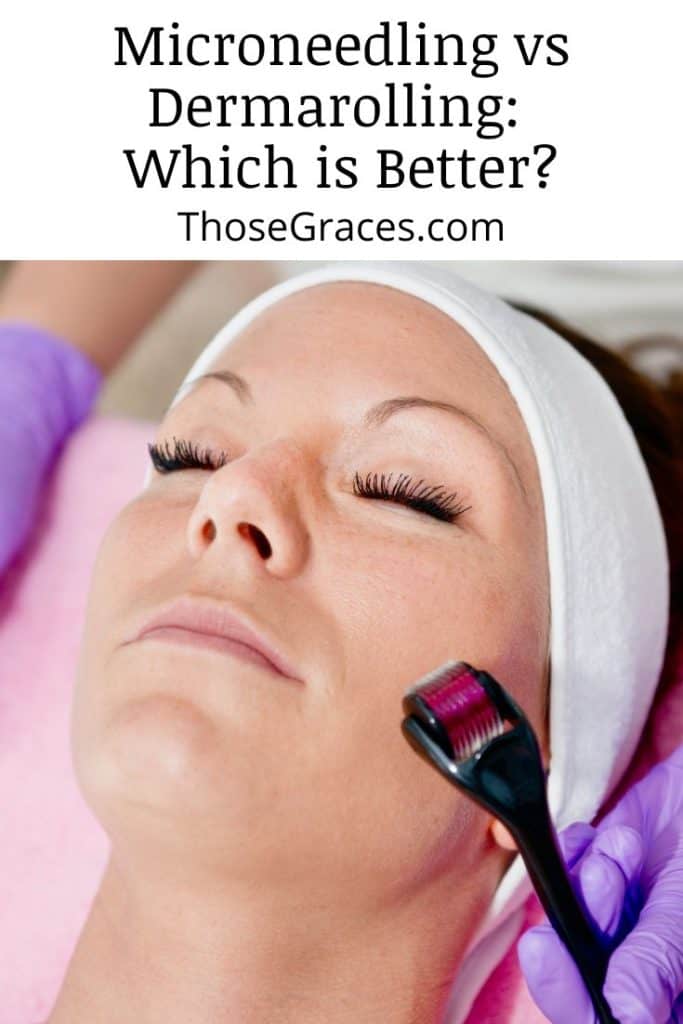
References
1. Doddaballapur S. Microneedling with dermaroller. Journal of Cutaneous and Aesthetic Surgery. 2009;2:110.
2. Mukherjee TM, Groth L. The Truth About 7 Home Skin-Care Devices: Do They Work? | Everyday Health [Internet]. EverydayHealth.com. 2022. Available from: https://www.everydayhealth.com/skin-beauty/the-truth-about-home-skin-care-devices-that-claim-to-give-you-glowing-skin/
3. Iriarte C, Awosika O, Rengifo-Pardo M, Ehrlich A. Review of applications of microneedling in dermatology. Clinical, Cosmetic and Investigational Dermatology [Internet]. 2017;Volume 10:289–98. Available from: https://www.dovepress.com/review-of-applications-of-microneedling-in-dermatology-peer-reviewed-fulltext-article-CCID
4. Perez M. How to Get Rid of Acne Scars [Internet]. Dermstore. 2020 [cited 2023 Apr 28]. Available from: https://www.dermstore.com/blog/how-to-get-rid-of-acne-scars/
5. admin. Interview with Taylre [Internet]. Alamo Heights Dermatology. 2021 [cited 2023 Apr 28]. Available from: https://alamoheightsderm.com/interview-with-taylre/
6. El-Domyati M, Barakat M, Awad S, Medhat W, El-Fakahany H, Farag H. Microneedling Therapy for Atrophic Acne Scars. The Journal of Clinical and Aesthetic Dermatology [Internet]. 2015;8:36–42. Available from: https://www.ncbi.nlm.nih.gov/pmc/articles/PMC4509584/
7. Hilton L. Studies support microneedling efficacy for acne scarring [Internet]. Dermatology Times. 2019 [cited 2023 Apr 28]. Available from: https://www.dermatologytimes.com/view/studies-support-microneedling-efficacy-acne-scarring
8. Bandral MR, Padgavankar PH, Japatti SR, Gir PJ, Siddegowda CY, Gir RJ. Clinical Evaluation of Microneedling Therapy in the Management of Facial Scar: A Prospective Randomized Study. Journal of maxillofacial and oral surgery [Internet]. Springer India; 2019 [cited 2019 Nov 23];18:572–8. Available from: https://www.ncbi.nlm.nih.gov/pubmed/31624439
Dermarolling or microneedling, which one do you prefer? Let us know in the comments below!



